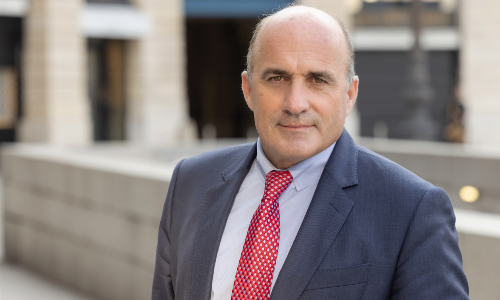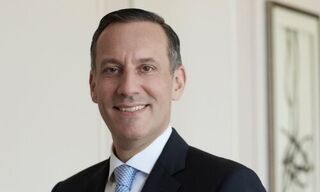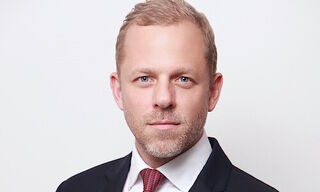Frédéric Leroux: «Who’s Right About Long-Term Inflation?»
While short-term economic cycle analysis often takes center stage, the current situation calls for a closer look at deeper, structural shifts, writes Frédéric Leroux in his contribution for finews.first.
In this section, authors comment on economic and financial topics.
Since 2021, major structural trends that influence long-term prices have reversed. They now provide a structural tailwind for inflation. However, widespread and consensual analysis, based on the study of the business cycle, concludes that inflation is likely to return sustainably to the 2 percent target in the major economically advanced areas, even if Donald Trump's tariff policy temporarily weakens this reading for the US.
But does the business cycle provide the right perspective for anticipating long-term price dynamics?
«Jerome Powell adding not adding the slightest reference to the impact of more structural forces»
Jerome Powell told us in 2021 that inflation, which he had not seen coming, would only be temporary. The Fed chairman was somewhat mistaken about the extent of the price increases, which reached almost 10 percent, and the duration of the inflationary surge. Last summer, as US inflation was finally returning to its target, the Fed chairman reiterated the same analysis as that of 2021, i.e., without adding the slightest reference to the impact of more structural forces.
Four decades of disinflation (1980-2020) have increased central bankers’ confidence in their own ability to master inflation. Now, the argument goes that the Trump shock, beyond its initial inflationary effects, which should be concentrated in the US, will, above all, have recessive effects, and therefore disinflationary effects in the mid-term.
This is, in any case, the conviction of those who rely on the study of the short-term economic cycle to anticipate changes in the inflation regime. A conviction reinforced by the fact that foreign products that can no longer reach the US, their traditional customer, will have to be sold cheaply elsewhere, and by the widely expected deflationary effects of artificial intelligence. They conclude that inflation is no longer an issue.
«The mistake is probably to focus on the short term and to neglect the major structural forces»
This approach has its merits, of course, and cannot be dismissed out of hand. But this type of analysis, based exclusively on the short term, is rarely effective in anticipating the future inflation regime. We had a potential glimpse of this with the erroneous vision of the central bankers in 2021. Another occurred during the era of Alan Greenspan, who spoke of a «conundrum» to express his lack of understanding of very low inflation and interest rates in the second half of the 1990s.
In both of these cases, the mistake was probably to focus on the short term and to neglect the major structural forces «above» the economic cycle. In the 1990s, at least five major forces combined to limit inflation.
The first was a major demographic trend that, by increasing the weight of savers in the economy, increased the capital available for investment and productivity gains.
The second force was that of a peaceful geopolitics very favourable to business, which amplified the development of globalisation that began at the end of the Second World War and allowed Ricardian disinflation.
The third was strong and continuous growth in energy production, which helped economic growth after two oil shocks with stagflationary effects.
The fourth force was a sociology very favourable to economic efficiency after the disgust caused by fifteen years of inflation, and the fifth was a Chinese-age pyramid that flooded the world with cheap products made by a young and prolific workforce.
«The second wave has probably already begun in the US»
The post-Covid economic reopening provided the inflationary spark that the simultaneous reversal of these five forces is likely to fuel for many years to come: Demographics that now reduce the proportion of savers in the population; geopolitics that are tense on all sides and proving less and less conducive to disinflation through trade (Trump’s election is a consequence of the geopolitical trend reversal); energy that is becoming more expensive as a result of the energy transition and geopolitical tensions; a sociology increasingly alien to the value of work; and, finally, the absence of an organised substitute for China to influence global wages.
Wouldn't these long-term factors be more naturally suited to anticipating medium-term inflation than an analysis of the short-term economic cycle? The inflation we are talking about peaked for the first time at the end of 2022 in Europe and the US. The second wave has probably already begun in the US, and it is dangerous to believe that it will be contained there or that it will not be followed by other waves.
This almost deterministic approach to inflation is neither conventional nor consensus, but its inherent rationality seems sufficiently compelling for us to incorporate it, at least to some extent, into our investment strategy.
Frédéric Leroux ist Head of Cross Asset at Carmignac.



























